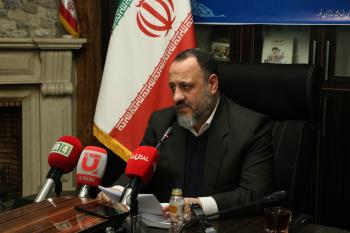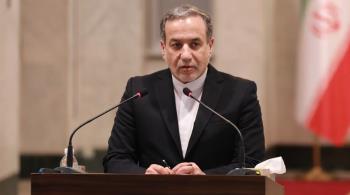The camera made its way to the street where the latest explosion near Beirut took place, perched on the shoulder of a cameraman who was only able to get into the scene on a motorbike. The shot gave perspective. Those sitting at home waiting for news of their loved ones felt like they were entering the scene as well.
Too familiar
The news on the TV screen has become much too familiar for the Lebanese as they sit before the bearer of bad news and receive tens of social media updates which have become most often than not faster than mainstream media. But for the past year the Lebanese people had been spared images of explosions, that is, until Thursday when several suicide bombers decided to refresh their memory.
ISIS has claimed responsibility for the attack that killed more than 40 people on a crowded street in the southern suburb of Beirut. At least 200 others were wounded. This marks one of the deadliest incidents to hit the country since the crisis in neighbouring Syria began.
Three suicide bombers were confirmed to have been present at the scene where one of them was killed before detonating the explosives he carried.
In a statement, the terrorist group vowed it will carry out more attacks against Shiite areas in Lebanon.
“Soldiers of the caliphate blew themselves up in the stronghold of the heretics, and after the apostates crowded around the site of the explosion, a second martyr blew himself up using his explosive belt,” the statement read.
Scattered pieces of flesh, pools of blood, and wailing ambulances broke the routine of the scene at Burj al-Barajneh’s busy market area of Ain al-Sekkeh.
Strategy of defeat
Logistically, targeting a heavily-populated civilian area during evening rush hour means one thing: ISIS was not aiming for Hezbollah positions or personnel. ISIS intentionally planned for the attack and the purpose was clear: to kill as many people as possible.
Failing to gain the upper hand in Syria, where Hezbollah fighters have joined the battle against extremist groups, ISIS and its likes have targeted civilian areas in Beirut’s southern suburbs in a bid to instil fear among Hezbollah supporters.
Earlier this year, Hezbollah and the Syrian army joined forces in the Qalamoun area along the Lebanese-Syrian border launching a major operation against militants and succeeding in driving them out of the mountainous region which was being used to assemble car bombs to be detonated in Lebanon.
“What happened here is a crime...this battle against terrorists will continue and it is a long war between us,” Hussein Khalil, a top aide to Sayid Hasan Nasrallah said.
Since then security forces have been taking measures and have set up checkpoints at entrances leading to the suburbs in an attempt to foil any such attacks.
That’s why the terrorists have altered their tactics. Unable to send in car bombs, the extremist group resorted to suicide bombers as a desperate measure. The location was chosen to inflict as many casualties as possible considering the narrowness of the streets, the density of the population, and the fact that it was a busy market not to mention that they struck near a Husayneya where Shiite Muslims were performing Duaa Koumail, a prayer usually recited on Thursday evenings.
Mariam Ahmad, a suburb resident, told Alwaght that the attack is a sign of defeat.
“I believe that the underlying reason for the twin bombings is an ISIS reaction to the arrest of complier M.J in Tripoli….after the Syrian army made advances in Aleppo,” she said.
It is no doubt that this onslaught was multi-faceted. On the one hand, it is seen as an attempt to lift the morale among extremist groups. Instead of confronting fighters at the battlefield where they are being defeated, they creep into civilian areas and kill so that they can relish on the idea of the blood they shed and feed on the grief they caused among people. However there is one thing they won’t be celebrating; pitting residents against Hezbollah’s involvement in the battle against terrorism and eradicating the support base the resistance movement has in Lebanon.
Ideology of resistance
One witness, who lives on the street where the massacre took place, impulsively told a TV reporter the first thing that came to mind: “Labbayki Ya Zaynab!” referring to the Prophet Mohammad’s granddaughter whose shrine is under the threat of extremist attacks in Damascus, before proceeding to give his account of the incident.
He is only one of many of the residents of Ain al-Sekkeh who raised their voices in defiance. Chants of “Labbayak ya Nasrullah” and “Labbayki ya Zaynab!” echoed in the aftermath of the explosion reiterating the people’s support for the cause in Syria in spite of the vengeance attacks that have taken away their loved ones, injured many, and damaged their homes and their shops.
The ideology of resistance is deeply-rooted in the suburbs of Beirut.
“This will not limit the people’s resolve. The resistance has suffered the loss of many martyrs and has always been facing wars. It will not bend in the face of this explosion,” Ahmad asserted.
What these bloody-thirsty foreign-backed terrorists, who are implementing an international agenda in the west Asia, don’t know is that there are people like Adel Termos, who was martyred embracing one of the suicide bombers to prevent him from entering the place of worship, who are willing to sacrifice themselves to protect others and that this sacrifice is what helps them emerge from the rubble stronger than ever time and time again. The attack may have succeeded in killing people but it has not triumphed over the people’s resilience.


























